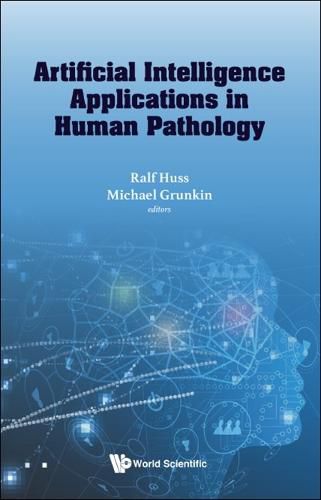Readings Newsletter
Become a Readings Member to make your shopping experience even easier.
Sign in or sign up for free!
You’re not far away from qualifying for FREE standard shipping within Australia
You’ve qualified for FREE standard shipping within Australia
The cart is loading…






This title is printed to order. This book may have been self-published. If so, we cannot guarantee the quality of the content. In the main most books will have gone through the editing process however some may not. We therefore suggest that you be aware of this before ordering this book. If in doubt check either the author or publisher’s details as we are unable to accept any returns unless they are faulty. Please contact us if you have any questions.
Artificial Intelligence Applications in Human Pathology deals with the latest topics in biomedical research and clinical cancer diagnostics. With chapters provided by true international experts in the field, this book gives real examples of the implementation of AI and machine learning in human pathology.Advances in machine learning and AI in general have propelled computational and general pathology research. Today, computer systems approach the diagnostic levels achieved by humans for certain well-defined tasks in pathology. At the same time, pathologists are faced with an increased workload both quantitatively (numbers of cases) and qualitatively (the amount of work per case, with increasing treatment options and the type of data delivered by pathologists also expected to become more fine-grained). AI will support and leverage mathematical tools and implement data-driven methods as a center for data interpretation in modern tissue diagnosis and pathology. Digital or computational pathology will also foster the training of future computational pathologists, those with both pathology and non-pathology backgrounds, who will eventually decide that AI-based pathology will serve as an indispensable hub for data-related research in a global health care system.Some of the specific topics explored within include an introduction to DL as applied to Pathology, Standardized Tissue Sampling for Automated Analysis, integrating Computational Pathology into Histopathology workflows. Readers will also find examples of specific techniques applied to specific diseases that will aid their research and treatments including but not limited to; Tissue Cartography for Colorectal Cancer, Ki-67 Measurements in Breast Cancer, and Light-Sheet Microscopy as applied to Virtual Histology.The key role for pathologists in tissue diagnostics will prevail and even expand through interdisciplinary work and the intuitive use of an advanced and interoperating (AI-supported) pathology workflow delivering novel and complex features that will serve the understanding of individual diseases and of course the patient.
$9.00 standard shipping within Australia
FREE standard shipping within Australia for orders over $100.00
Express & International shipping calculated at checkout
This title is printed to order. This book may have been self-published. If so, we cannot guarantee the quality of the content. In the main most books will have gone through the editing process however some may not. We therefore suggest that you be aware of this before ordering this book. If in doubt check either the author or publisher’s details as we are unable to accept any returns unless they are faulty. Please contact us if you have any questions.
Artificial Intelligence Applications in Human Pathology deals with the latest topics in biomedical research and clinical cancer diagnostics. With chapters provided by true international experts in the field, this book gives real examples of the implementation of AI and machine learning in human pathology.Advances in machine learning and AI in general have propelled computational and general pathology research. Today, computer systems approach the diagnostic levels achieved by humans for certain well-defined tasks in pathology. At the same time, pathologists are faced with an increased workload both quantitatively (numbers of cases) and qualitatively (the amount of work per case, with increasing treatment options and the type of data delivered by pathologists also expected to become more fine-grained). AI will support and leverage mathematical tools and implement data-driven methods as a center for data interpretation in modern tissue diagnosis and pathology. Digital or computational pathology will also foster the training of future computational pathologists, those with both pathology and non-pathology backgrounds, who will eventually decide that AI-based pathology will serve as an indispensable hub for data-related research in a global health care system.Some of the specific topics explored within include an introduction to DL as applied to Pathology, Standardized Tissue Sampling for Automated Analysis, integrating Computational Pathology into Histopathology workflows. Readers will also find examples of specific techniques applied to specific diseases that will aid their research and treatments including but not limited to; Tissue Cartography for Colorectal Cancer, Ki-67 Measurements in Breast Cancer, and Light-Sheet Microscopy as applied to Virtual Histology.The key role for pathologists in tissue diagnostics will prevail and even expand through interdisciplinary work and the intuitive use of an advanced and interoperating (AI-supported) pathology workflow delivering novel and complex features that will serve the understanding of individual diseases and of course the patient.